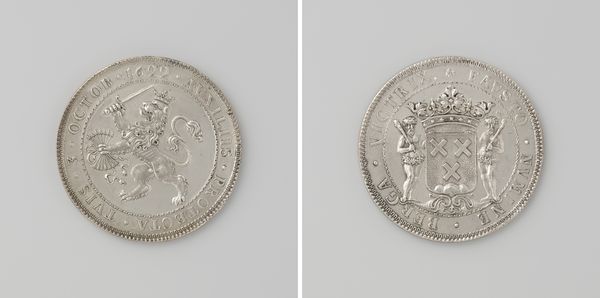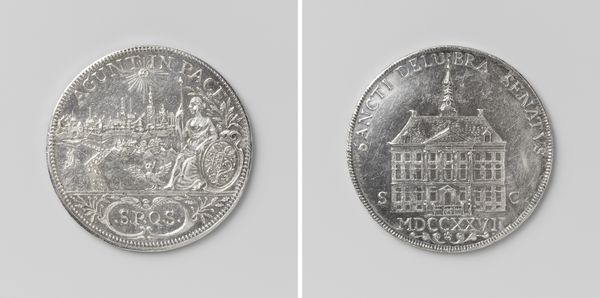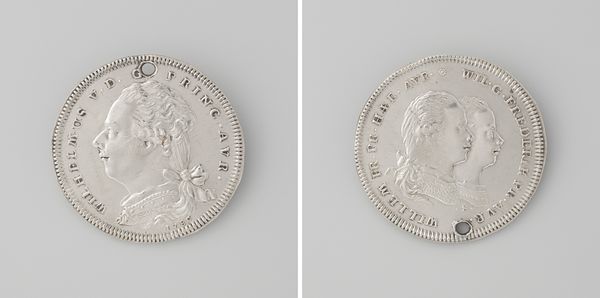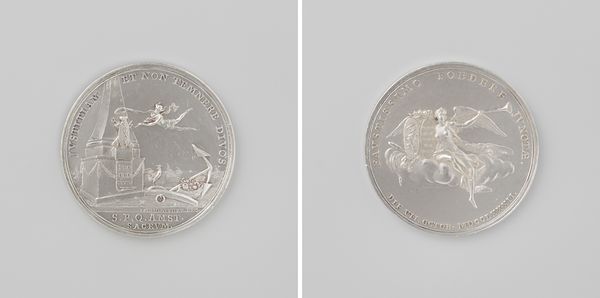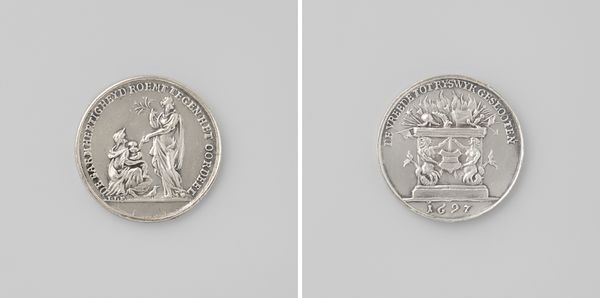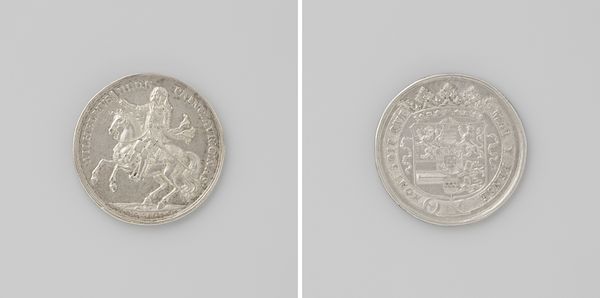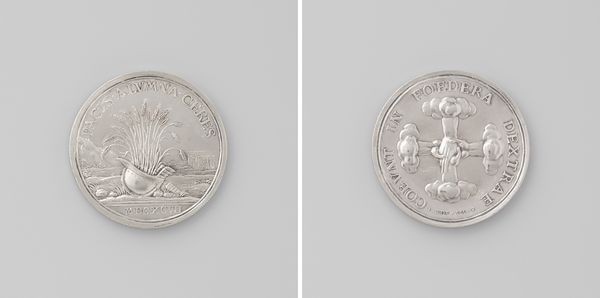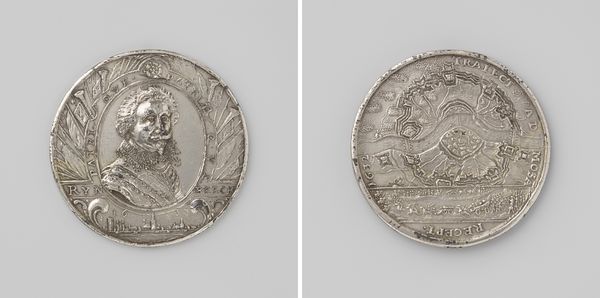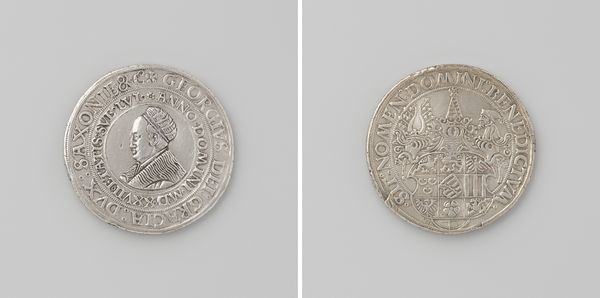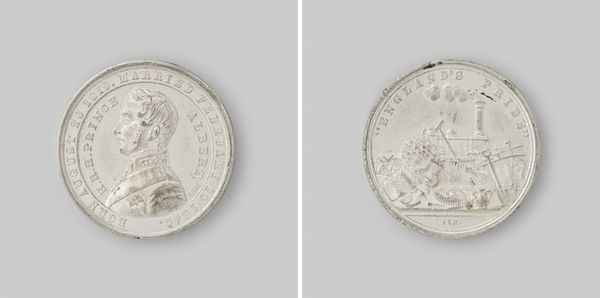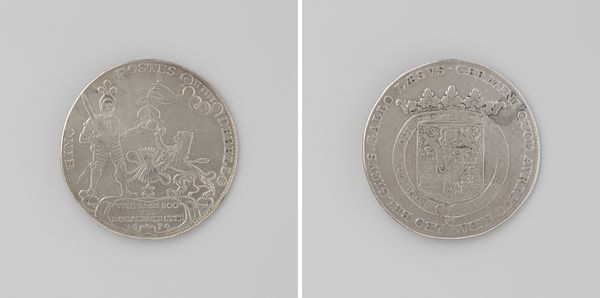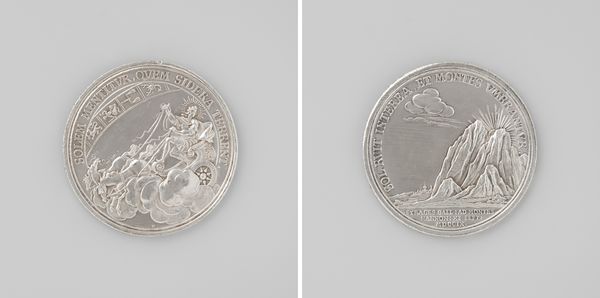
Inhuldiging van de prins en prinses van Oranje tot heer en Vrouwe van de Baronie van Breda 1737
0:00
0:00
silver, print
#
portrait
#
medal
#
silver
#
baroque
# print
#
history-painting
Dimensions: diameter 2.8 cm, weight 6.69 gr
Copyright: Rijks Museum: Open Domain
Curator: Here we have a fascinating medal, "Inhuldiging van de prins en prinses van Oranje tot heer en Vrouwe van de Baronie van Breda," made in 1737. Editor: It's immediately striking in its starkness. The cool silver tone and precise engraving give it an almost clinical feel, despite the celebratory context the title implies. Curator: Absolutely. These commemorative medals were crucial tools in shaping public perception of power. This one celebrates the inauguration of the Prince and Princess of Orange. Silver, like many prints of the period, served to distribute images of power and celebrate political moments to a wider audience. Editor: I'm interested in the imagery. On one side, intertwined coats of arms crowned with royalty speaks to dynastic power, while the other features a pelican feeding its young. It’s interesting that divine favor is implied. Is there perhaps some political propaganda embedded within this medal, by visually suggesting a kind of 'sacred right to rule'? Curator: Certainly. The pelican, a traditional symbol of self-sacrifice and nurturing, cleverly aligns the ruling family with qualities deemed virtuous and almost saintly. The Baroque period, after all, saw the manipulation of imagery for political gain refined to an art form. Editor: And who designed such carefully crafted and ideologically rich piece of material? What does that even mean? It looks so beautiful that I feel like its aesthetics disguise deeper socio-political constructs of power. Curator: Unfortunately, the maker is unknown. We should remember that even 'anonymous' works existed within systems, serving clear political, social, or economic roles regardless of the artist's visibility. Here in the Rijksmuseum, this medal can tell a different story about colonialism and the relationship of The Dutch royal family and the general Dutch population. Editor: Absolutely. Seeing it displayed now prompts necessary dialogues on historical legacies and representation. Thanks for shedding light on this interesting object, now located in The Rijksmuseum collection. Curator: My pleasure. It's through understanding objects like this medal that we truly grasp the complex interplay between art, power, and societal values across time.
Comments
No comments
Be the first to comment and join the conversation on the ultimate creative platform.
